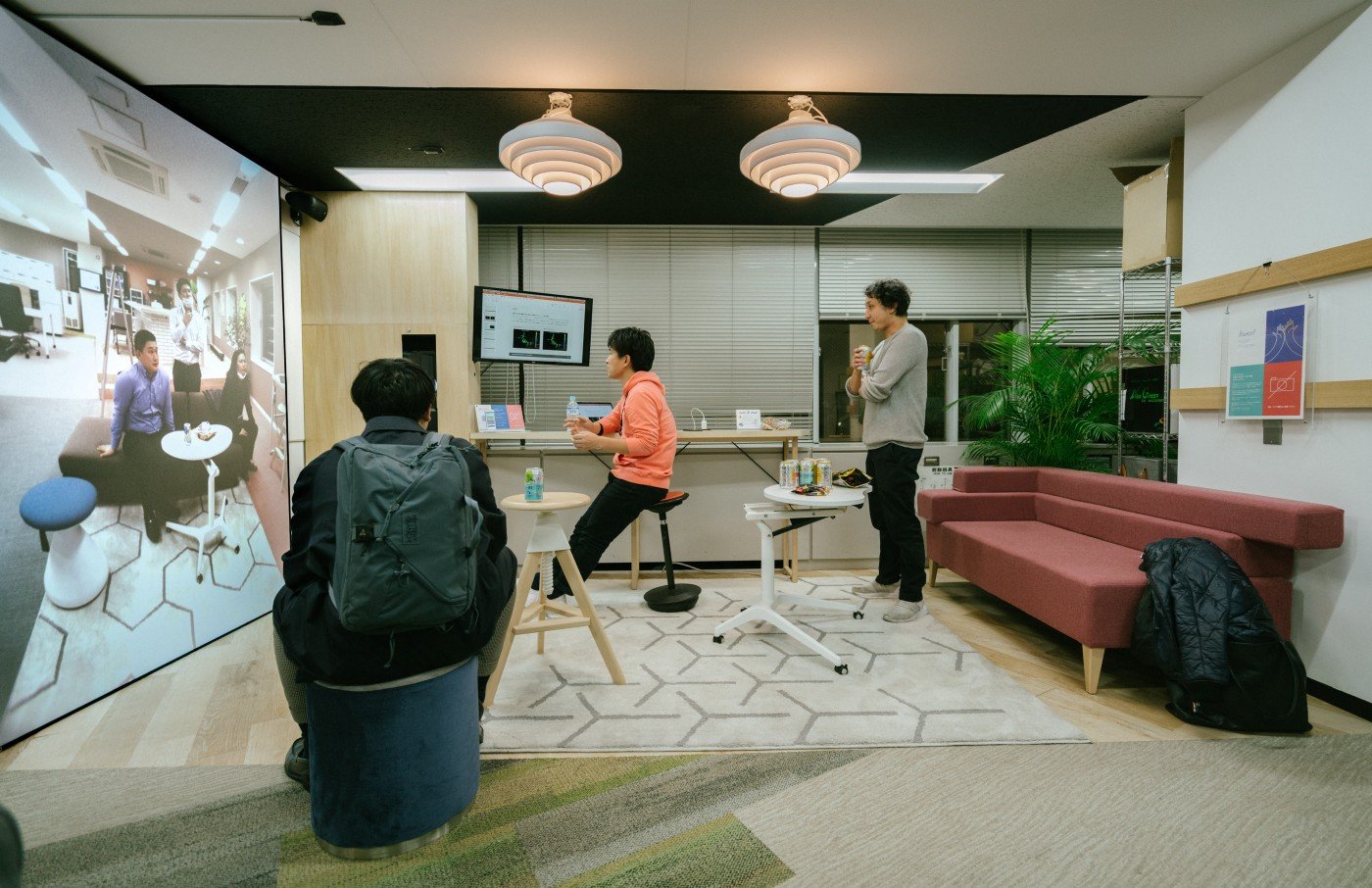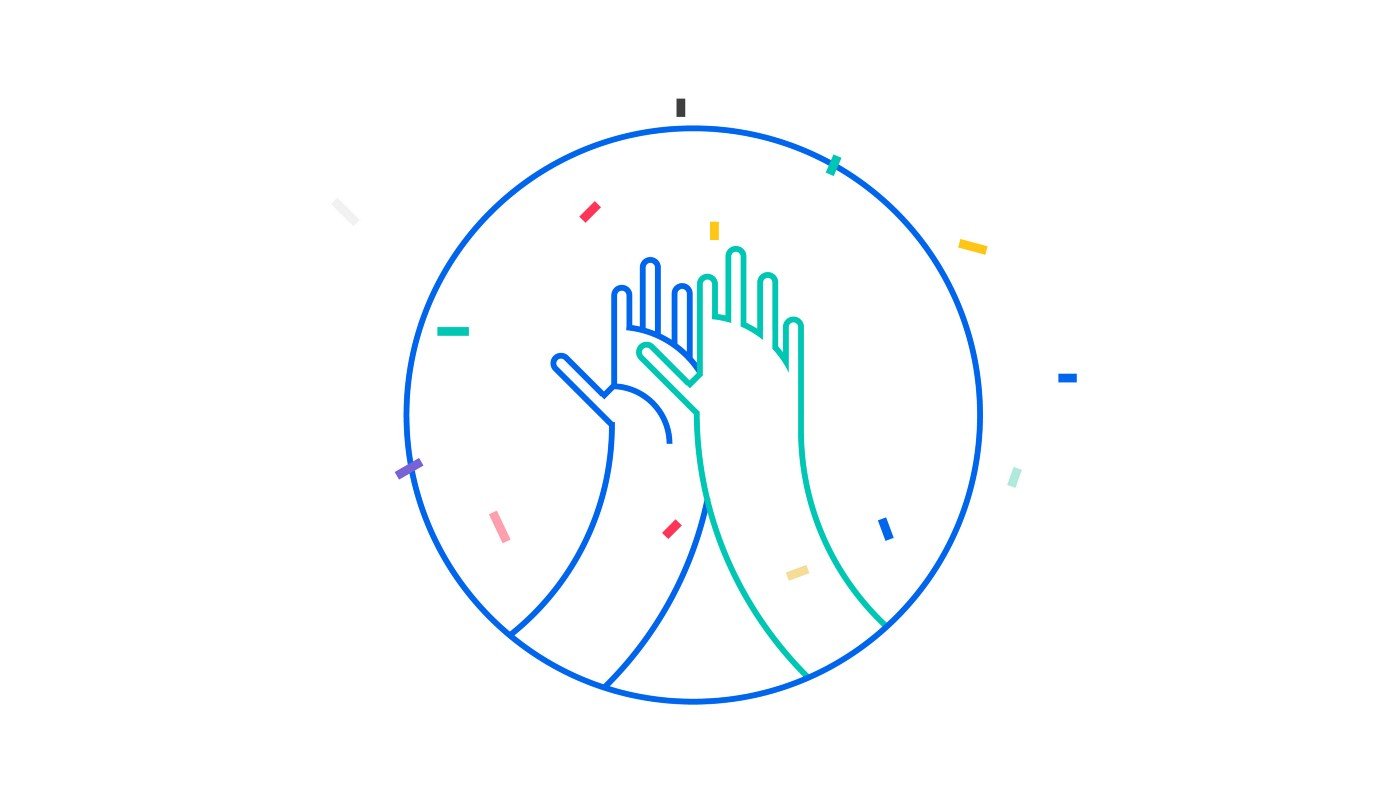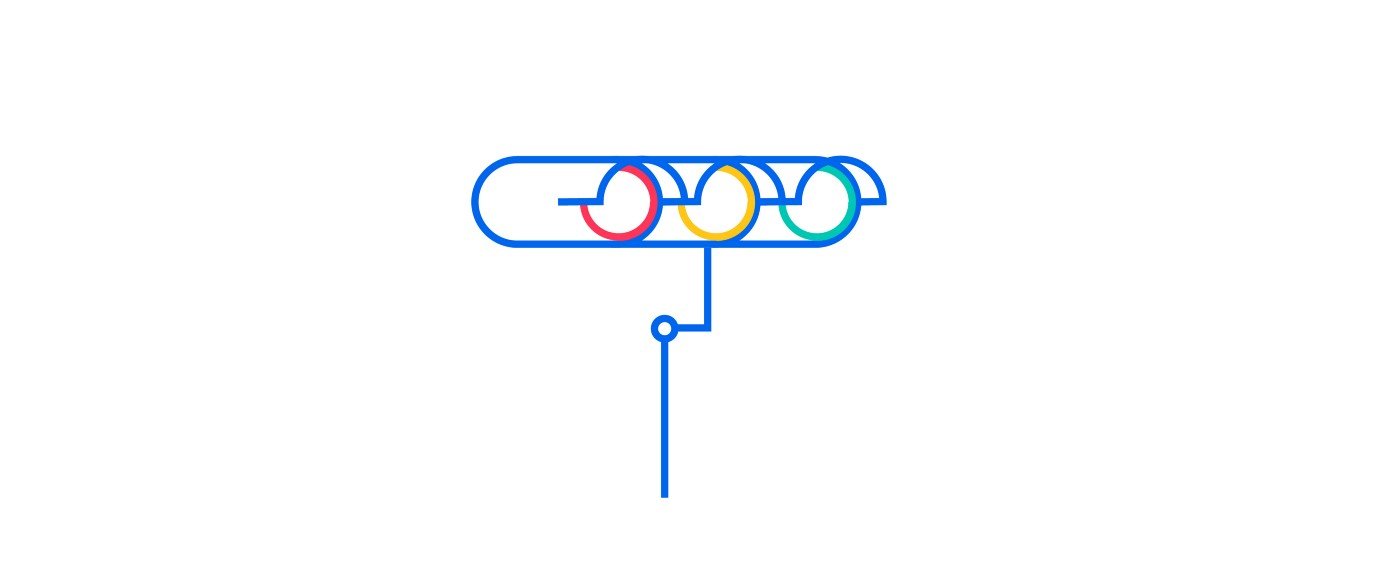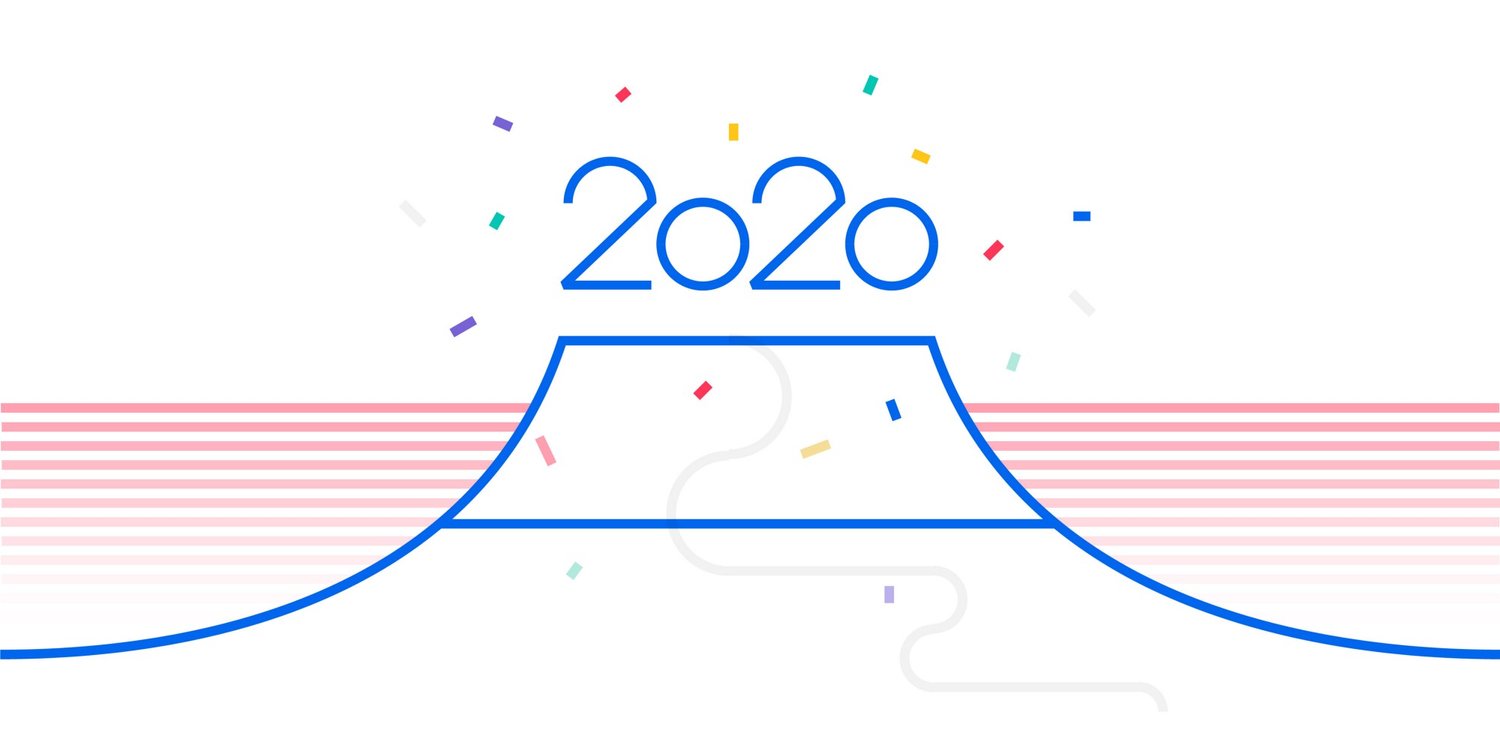In January, just a few weeks ago, we finally reached a huge milestone we set out to achieve in 2019: we built tonari, we launched our first pilot, and it’s now being used daily in the Tokyo and Osaka offices of Frontier Consulting. And in a strange and unexpected moment of calm, with no issues to be seen or heard, we celebrated by updating our internal version number to 1.0.
As a product, building tonari has been a long and uphill journey with a lot of technical unknowns. Since we first imagined it in 2017, we dreamed of building something like a portal: an opening between two places that feels as real as being in the other place. We also sometimes joked that we might just be building “big skype on a wall.”
In truth, it straddles something between those ideas. But importantly, and perhaps awkward to admit: it’s way better than any of us actually thought it would be. It works. People love it. When talking and hanging out through tonari, it feels like being together. In memory, the lines between real and virtual become blurred: “Wait, what — I just saw you last week, didn’t I?”
It’s still hard to describe tonari in words or images. Like Mt Fuji at sunset, it’s something that has to be both seen and felt to be fully understood. We wish we could invite each of you to experience tonari soon, to have an important meeting with a colleague, or a coffee chat with a friend or loved one. Alas, for now we can only share the impressions of others:
- "I really felt after seeing the demo that a picture is worth a thousand words — I had heard about tonari many times already, but when I could actually see the person, life-sized, and their background, it becomes possible to have a more relaxed and intimate conversation.Previously, my image was closer to tonari being the next generation of web conferencing tools, but now I see it as being more like a どこでもドア."
- "What impressed me was that Gonoo-san was barefoot! (laughs) It’s because I could see that much, the impression is that I Gonoo-san, rather than with him. This feeling remains even after I went home."
- "I use tonari every day and feel the connection between the offices strengthening. It feels like I can walk through the screen and into the Tokyo head office! When discussing a project, I receive information beyond just voice, so I can sense the subtleties of the information being conveyed."
- "I was totally surprised by the quality of the technology. Being able to send video and audio at that resolution and frame rate with such low latency is incredible. As I mentioned at the meeting, I was initially imagining “big Zoom,” but the quality of the experience is completely different… I could feel the difference. Especially when I started to talk at the same time as Gonoo-san, I saw that he noticed me taking a breath, and he stopped talking… I was reminded again of the meaning of working in a good environment and the stupidity of long-distance commuting. In the train ride on the way back, I searched for a property that could be used as an office by the sea near Kamakura and Fujisawa…"

Stepping back: who are we?
If you’re reading this, you probably already know that tonari is a social venture, founded in 2017 and accelerated in 2018 with the generous support of an award from Nippon Zaidan. This has given us roughly $500K per year to work on the development of tonari for social good.
As a social venture, we first established a nonprofit institute for social and technology research and advocacy. This effort focuses on understanding the interpersonal, socioeconomic, and environmental challenges associated with commuting, traveling, and maintaining long-distance relationships in our everyday lives. Through this research, we’re seeking solutions that can have an outsized impact over the next 10 years, and help society rethink how we work together, how we travel, how we access education, and how solutions like tonari can reduce the tremendous environmental impacts of globalization and address increasing demands for connectivity.
Last year, we also established a shareholder company that develops tonari’s solutions, supports users, and manages the operations and heavy lifting of deploying tonari. Through this second arm, we can partner with investors and manufacturers, get access to other capital and resources not available to nonprofits, and work towards building tonari into a viable product and infrastructure at global scale.
With this dual structure, we share our leadership, integrity, and vision between the company and nonprofit, guiding us to stay true to our social impact goals as we grow. Our core team, with responsibilities to both orgs, is comprised of 8 people: 4 engineers, 1 research lead, 1 partnerships lead, 1 product lead, and 1 designer. Our extended team members, including contractors and advisors, also play a big role in our day-to-day execution.
tonari’s mission is to create a world unbounded by distance, with access to work, education, and community everywhere. By enabling each of us to be where we want to be, we empower everyone to live and work better, together.
You can learn more about our vision, who we are, and how we think from our website and the updates we share in our monthly newsletter.
Building tonari
When we presented tonari in 2017, we didn’t know what shape it would take when manifesting from our imaginations into physical reality. After all, the idea of a portal (or dokodemo door if you’re Japanese) is simple on the surface, but the product and engineering roadmap is full of traps and obstacles:
- For tonari to be always on and serendipitous, the audio has to be high-fidelity with minimal compression and noise, without using directional boom or lapel mics.
- For visual realness, people need to be life-sized and make eye contact, while also being able to look deep into the room to see others and sense the atmosphere.
- For gestures, body language, reactions, and conversations to flow naturally, the latency needs to be imperceptible; everything needs to be incredibly fast, smooth, and stable.
- For trust, we have to be uncompromising in our approaches to privacy and data security.
- For performance, we must work as close to the metal and wires as possible, while dealing with physical limits like bus transfer speeds and faulty network switches.
- For stability and maintenance, it’s paramount to keep our code simple, elegant, and readable. tonari’s codebase is less than 2% of the size of WebRTC.
None of these things are technically easy, and we can’t say we’ve accomplished everything we’ve set out to do. But thanks to a very talented team and a lot of technological timing, what we’ve already achieved in each of these areas is significant. Moreover, we have a good understanding of how to resolve the next challenges that will bring tonari from its current pilot phase into a min-viable product. This includes further upgrades to audio quality and noise suppression, improved video resolution and dynamic range, and a robust build process that will make tonari easier to deliver and install.
For confidentiality reasons, we can’t divulge many of the technical details right now, though we look forward to open sourcing more of tonari as we continue development. Nonetheless, with a strong technical footing and team, we can confidently say that we are excited for the prospect of delivering tonari beyond the pilot program to early adopters in the second half of this year.

Pilots and early adopters
One of the most important things we want to achieve this year is to begin scaling how we get tonari to partners and early adopters. Our ultimate ambition is for tonari to be like social infrastructure: something that can be accessed relatively cheaply by everyone in every class of society, like public transport or mobile phones. As a social venture, our success must be measured by our ability to have broad social impact, which means tonari cannot just be a B2B product for workplace and enterprise customers.
Reaching this high goal requires a long view on how technologies and products move from a high-cost research and development stage into the mainstream and mass market. For this, our model is Tesla: to build a popular mass-market electric vehicle like the Model 3, Tesla had to start by capturing the imaginations of the industry and customers with the Roadster and Model S. Tesla’s high-performance limited-production vehicles cemented the idea that electric vehicles can be better than their combustion counterparts. The brand value and reputation Tesla built on those earlier models put them in a clear position to lead the market and society into a much bigger transition towards electric, while also developing the knowledge, partnerships, and manufacturing capability to be first to mass-market.
For tonari to follow a similar path, we also aim to build a high-quality first-generation product for pilots and early adopters. Internally, we call this our bespoke installation: one that can be custom-fitted to the space, designed and furnished as a unique environment, and supported with high-touch care. With each of these installations, we’ll attentively perform research and make improvements, and all installations will be proactively upgraded with the latest software and hardware to ensure everyone has access to the best version of tonari.
Like a high-performance luxury car, the scale of bespoke installations will be limited and costs will be high. For pilot partners, we will reduce costs with support from our Nippon Zaidan grants, and possibly with help from future sponsors. For early adopters, we will seek out teams and individuals who have high costs and pains that can be reduced by tonari, and who are adventurous, innovative, and influential within their fields.
With one pilot currently launched, in 2020 we will expand our pilot program to launch at least four additional installations that cover new teams, regions, or use cases. At least two of these will focus on the workplace, at least one will focus on education, and at least one will focus on connecting remote communities and families. We’ll make more announcements about these programs in the early spring, and will seek help from our community to reach potential partners.
As a commercial product for early adopters, we hope to make tonari available to select customers in the second half of this year, with a focus on Japan first, and parts of Asia and the US to follow. We’re very excited for the shape that the bespoke product is taking, and look forward to sharing more information about features, pricing, and availability as that time approaches.
Research and learnings
By focusing on a bespoke product first, we can also have time and headspace to stay close to our users, perform collaborative research and experiments, and learn and improve with greater attention to detail. If tonari is to scale to become infrastructure, we want to truly understand and realize its full value and potential from the perspectives of the everyday people who will use it.
Our pilot programs represent our research and learning efforts most holistically. In exchange for support and feedback, we bear much of the financial burden of installing tonari in a partner location. Members of the partner organization then volunteer their time to help with onboarding and training users, troubleshooting and support, planning events, coordinating research activities, and regularly meeting and sharing feedback and user stories with our team.
In our first pilot with Frontier Consulting, we chose to test an open installation in their Tokyo and Osaka offices, connecting areas near their cafe table and hot desk spaces where a variety of employees freely move and work throughout the day. With tonari, this space can accommodate small group meetings, spontaneous questions and hellos, and even special events like happy hours and lunch meetups. Our facilitators (volunteers inside FC) are constantly brainstorming and organizing interesting experiments and things to try among the ~200 employees that have access to tonari between the two locations. With a huge number of people playing out so many interesting scenarios, we’re able to capture a lot of qualitative learnings. We look forward to sharing our first public research report from the FC pilot in March~April.
Looking further ahead, additional pilot programs in 2020 will help us to increase the diversity of people and scenarios we can learn from; and we will take more rigorous approaches to quantitative metrics and analysis, especially in relation to social physics, communication efficiency, cost savings, and other personal and social benefits. Among the programs we have planned, we look forward most to evaluating tonari in scenarios for education, communities, and families. Additional work pilots will also help us to establish case studies to value tonari as an innovative tool in the workplace. We’ll publish reports on these efforts too.

Future growth and outlook
We’re still a very small and lean team, and for the moment that works well for us. But we also already have so many thoughts on what we want to build, what the next generation of hardware and design might look like, and how we want to scale production and partnerships to reach every corner of every place. Sometimes it feels hard to not want to race ahead; to not say yes to everything and everyone who seems genuine and interesting and lovely; to not always optimize for faster growth.
Still, we believe firmly in focusing on quality and utility at each step. We want to work hard to build the kind of product that people dream of; that once you experience it, you never see the world in quite the same way; that affects your behavior and reshapes your image of the future.
A quote by Robert Fripp, shared at the opening of last year’s Labyrinth, feels relevant here too:
There’s hope that… since qualitative situations are not bound by quantitative rules, a small act of quality… is as large a qualitative act as a large act… My personal expression of this is: a qualitative leap inwards expands outwards in all directions.
Fripp later codified his philosophy on structures in an insert included in his 1984 album Let The Power Fall.
In 2021, as we move on from bespoke installations to our next phase of product development, we will be gearing up for a radical leap. This will largely be brought about from the quality of our team and of our early products, as well as the relationships and commitments we share with our partners, customers, and users.
We’re grateful for everyone in our community, and to those who have inspired us, shared feedback, expressed support, and guided us on this journey. Please stay with us. We have so much more we want to share with you. 💙


Taj Campbell & Ryo Kawaguchi, Co-founders
If you enjoyed this and want to learn more about tonari, please visit our website and follow our progress via our monthly newsletter. And if you have questions, ideas, or words of encouragement, please don't hesitate to reach out at hey@tonari.no. 👋
Find us 💙
Facebook: @heytonari Instagram: @heytonari X: @heytonari
